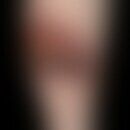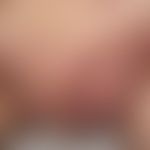Synonym(s)
HistoryThis section has been translated automatically.
DefinitionThis section has been translated automatically.
A chronic, recurrent, melting and scarring, neutrophilic, furunculoid, autoinflammatory reaction of the skin and subcutis, which manifests itself preferably in the intertriginous areas, i.e. perianal, inguinal, gluteal and/or axillary. In aytpic forms, the retroauricular region or the neck may be affected. The main pathogenetic factor here is the destruction of terminal hair follicles in intertriginous skin areas.
Smoking and obesity are important predisposing factors in addition to a genetic disposition (Jørgensen AR et al. 2020).
You might also be interested in
Occurrence/EpidemiologyThis section has been translated automatically.
The prevalence of previously diagnosed acne inversa in Germany is 0.3%. In Denmark, the prevalence in the general population is 1.1%. In England, an incidence of 1:600 is reported. Africans have a higher incidence than Europeans.
EtiopathogenesisThis section has been translated automatically.
Chronic, neutrophilic folliculitis associated with destruction of the terminal hair follicles and secondary involvement of the apocrine sweat glands. In some patients, follicular hyperkeratosis with subsequent superinfection can be detected (see below acne inversa; acne triad or acne tetrad). In other patients, however, follicular hyperkeratoses cannot be detected. Otherwise, the clinical picture of chronic destructive inflammation of the skin and subcutis is largely identical.
General favoring factors: smoking (90% of patients are smokers!), sweating, obesity (odds ratio 3.9), metabolic syndrome (Phan K etal. 2019), abrasive clothing, regular shaving of armpit hair, depilatory topicals.
The lesional hidradentitis keratinocyte: Of pathogenetic importance is that lesionalhidradentitis keratinocytes autonomously secrete high amounts of chemokines such as CCL2, CCL3 and CXCL3. They thus recruit neutrophil granulocytes, CD8 T cells and natural killer cells. Keratinocytes also appear to be the major source of tumor necrosis factor-α and interleukin (IL)-6 in hidradenitis lesions. In the presence of IFN-γ (IFN-γ depends on infiltration by immune cells in vivo), keratinocytes also express increased levels of cytokines such as IL-1β, IL-12, IL-23 and IL-36γ. Remarkably, the JAK inhibitor ruxolitinib attenuates the expression of inflammatory cytokines and chemokines in lesional HS keratinocytes. It thus provides a basis for future studies on the topical treatment of hidradenitis suppurativa, especially as it shows excellent penetration behavior in suitable bases (Schell SL et al. 2023).
Genetic dispositions:
- In the very rare "familial forms of hidradenitis suppurativa", mutations in the"gamma-secretase complex (see PSENEN 2 gene below)" have been detected (see below Acne inversa familial 2, with or without Dowling-Degos disease; OMIM: 613736).
- MEFV defect (MEFV stands for "MEFV Innate Immuity Regulator, Pyrin"). The protein encoded by the MEFV gene, also known as pyrin or marenostrin, is an important modulator of innate immunity and the inflammatory response in response to IFNG/IFN-gamma. Mutations in this gene are associated with familial Mediterranean fever, a hereditary periodic fever syndrome. MEFV mutations are more common in hidradenitis suppurativa than in the normal population. They are associated with the severity of the disease, but are also of pathogenetic importance in many other inflammatory diseases.
- Crohn's disease: Associations with Crohn's disease have been described - the risk of developing HDS is increased threefold (Garg et al 2018).
- Associations with rheumatoid factor-negative polyarthritis, hypertension and pyoderma gangraenosum are known (see SAPHO syndrome below). An association with systemic amyloidosis is rarer.
- Paradoxical reactions: Of aetiological relevance is the indication that hidradenitis suppurativa can occur as a paradoxical reaction(ADR) during treatment of rheumatoid arthritis or Crohn's disease with TNF-alpha antagonists (Salvador-Rodriguez L et al. 2020).
ManifestationThis section has been translated automatically.
In a larger American study (Garg A et al. 2018), the age of onset ranged from 28 to 64 years; 56.5% aged 18 - 44 years, 34.2% aged 45- 64 years, 9.3% were > 65 years old. Perianal manifestation is more common in men than in women. Also more frequent in smokers.
LocalizationThis section has been translated automatically.
Frequent manifestations: axillary-upper arm region, inguinal region, anal and perianal region, perineum, scrotum, gluteal region, inner thigh and extensor sides.
Atypical forms: retroauricular, neck
Rare: around the nipples and vulva.
Clinical featuresThis section has been translated automatically.
In the early stages, some cases show inflammatory, superficially located, bright red, painful nodules and lumps. These can confluent into painful, bulge-like abscesses or break open purulently.
A distinction is made between 3 degrees of severity (Hurley) depending on the clinical manifestation:
- Hurley grade I: Isolated, single or multiple painful abscesses, no scar tissue or fistula tracts.
- Hurley grade II: Recurrent painful abscesses with cord formation and scarring, single or multiple, but not extensive.
- Hurley grade III: Diffuse, plate-like, inflammatory, painful infiltrations, or multiple interconnected cords (fistulous tracts) and abscesses. Risk of joint contractures due to pain-related restriction of movement.
LaboratoryThis section has been translated automatically.
The inflammatory parameters may be elevated (neutrophil granulocytes, CRP, leukocytes, haptoglobin).
The level of the acute phase protein haptoglobin is associated with the severity of the disease and the risk of metabolic complications (Abu Rached et al. 2023).
Differential diagnosisThis section has been translated automatically.
Early stage: boils and carbuncles; acne inversa.
Late stage: tuberculosis cutis colliquativa; anal fistulas; pilonidal sinus; deep trichophytia; Crohn's fistulas; lymphogranuloma inguinale; actinomycosis.
Complication(s)This section has been translated automatically.
Recurrence tendency: Recurrences are possible even after radical surgery. The recurrence rate varies depending on the localization: axillary approx. 3%, inguino-perineal approx. 35%, submammary approx. 50%. The formation of squamous cell carcinoma (Marjolin's ulcer) is possible with longer courses.
Contractures/fistulae: Dermal contractures with restriction of movement of the shoulder and hip joints, persistent swelling of the external genitalia, deep pararectal fistulae in the perianal region, urethral fistulae remain in the genital region.
Sepsis: Septic courses are rare.
Increased cardiovascular risk: Apparently, patients with hidradenitis suppurativa are at increased cardiovascular risk (myocardial infarctions, ischemic strokes)
Increased risk of diabetes mellitus: Patients with severe, inflammatory forms of HS have an increased risk of diabetes mellitus (Abu Rached et al. 2023).
Associated diseases:
- SAPHO syndrome: Increased risk of SAPHO syndrome(synovitis, acne/hidradenitis suppurativa, pustulosis, hyperostosis and osteitis (Crowley EL et al. 2018)
- PASH/PAPASH syndrome: Increased risk of PASH syndrome (pyoderma gangrenosum, acne and suppurative hidradenitis) or PAPASH syndrome(pyoderma gangraenosum, acne, pyogenic arthritis and suppurative hidradenitis). These syndromes are associated with mutations in the PSTPIP1 gene(proline-serine-threonine phosphatase interaction protein 1 gene) or the PSENEN gene(PSENEN is the acronym for presenilin enhancer, gamma-secretase complex) (Vinkel C et al. 2017).
- Familial Mediterranean fever: In patients with familial Mediterranean fever (FMF), the most common hereditary autoinflammatory disease, hidradenitis suppurativa may show a severe phenotype (Vural S et al. 2017). A molecular link between familial Mediterranean fever and PASH/PAPASH and complex hidradenitis suppurativa is suspected, especially when accompanied by pyoderma gangraenosum, as the products of Mediterranean fever gene(MEFV) and PSTPIP1 interact with each other.
TherapyThis section has been translated automatically.
Grade I:
- Intralesional triamcinolone crystal suspension injections 5-10 mg (e.g., with Volon A) are indicated for early uncomplicated hidradenitis suppurativa. Abscess incision followed by drainage (e.g., insertion of a polyvidone-iodine-soaked ointment strip) in cases of fluctuation and impending perforation. Concomitant system antibiosis with tetracyclines (Tetracycline-Wolff 1.0-1.5 g/day p.o.), doxycycline (e.g. Doxycycline Stada 100-200 mg/day p.o.) for 14 days until the inflammatory manifestations subside.
- Alternatively: ciprofloxacin (e.g., Ciprobay 2 times/day 250 mg p.o.) or cephalosporins such as cefadroxil (e.g., Cedrox 1.0-1.5 g/day). After obtaining culture results, therapy regimen according to antibiogram.
- Alternative: PIONEER I and PIONEER II studies confirmed good efficacy of adalimumab in this condition (Saunte DML 2017).
- Prophylaxis: After healing, regular treatment of the affected areas with disinfecting and deodorizing agents, e.g. with 15-20% alcoholic aluminum chloride hexahydrate solution R005 or R006 or gel R004. Caution. Not all patients tolerate deodorants based on aluminum chloride! Important: Avoid tight-fitting clothing such as T-shirts, blue jeans, body shirts, etc. No use of deodorant rollers or deodorant sticks.
Grade II:
- Surgicaltherapy: Therapy of first choice, depending on the localization, is radical surgical sanitation of the inflammatory changed areas (Kirschke J et al. 2015). To what extent preoperative therapy with isotretinoin (e.g., acnenormin) 0.5-1.0 mg/kg bw p.o. for 3-6 months should be used is currently undecided (Blok JL et al 2013). The German guidelines do not provide for this. Overall, the success of isotretinoin in hidradenitis suppurativa must be considered rather disappointing (Scheinfeld N 2013).
- In axillary localization: oval-lanceolate circumcision of the secreting glandular areas previously marked by the minor sweat test. For this purpose, aqueous iodine solution is applied in the axilla by means of a stick swab and then powdered with wheat starch; secreting areas are marked in blue-black. Excision is followed by subcutaneous wound margin mobilization and removal of inflammatory conglomerates with dissecting shears. If technically possible, primary wound closure. Postoperative antibiotics. A dressing to prevent abduction motion should immobilize the arm for approximately 7 days. Primary wound closure is often not possible. In these cases, closure can be attempted via mesh graft or the surgical field can be left open. Regular dressings with alginates (e.g. Algosteril, Tegagel), accompanying antibiosis. After appropriate wound granulation meshgraft transplantation.
Grade III:
- Surgicaltherapy: In case of severe extensive hidradenitis of the axillae or genitoanal region, radical excision of the inflammatory field is the means of choice. If possible, start isotretinoin (e.g., isotretinoin-ratiopharm; acnenormin) 0.5-1.0 mg/kg bw p.o. 3-6 months beforehand. If necessary, intravenous antibiotic therapy (e.g., ceftriaxone 1 time/day 2 g i.v.) should be applied preoperatively for 7-10 days. The operations should be performed in clinics that have the necessary experience for this purpose. Details of the surgical procedure are identical to the procedures for grade II hidradenitis suppurativa. Depending on the radicality of the operation, secondary healing shows a recurrence rate of up to 30%. Basically, the more radical the operation, the lower the risk of recurrence!
General therapyThis section has been translated automatically.
After healing, treat the affected areas regularly with disinfecting and deodorizing agents, e.g. with 15-20% alcoholic aluminium chloride hexahydrate solution or gel(R004). Caution! Not all patients tolerate aluminum chloride-based deodorants!
Important: Avoid tight-fitting clothing such as T-shirts, tight-fitting jeans, body shirts, etc.
Do not use roll-on deodorants or deodorant sticks.
Internal therapyThis section has been translated automatically.
Approved anti-inflammatory system therapies:
Adalimumab: Systemic therapy with adalimumab (e.g. Humira®: 40mg s.c./1 x per week - PiONEER I study) leads to a good clinical result after a period of 12 weeks. Adalimumab is approved for this indication (dosage as stated above). Dosage for adults with moderate to severe acne inversa: Humira® 80 mg / 0.8 ml: induction 2 injections 80 mg (week 0: 160 mg), maintenance: from week 2 one injection 80 mg every second week (see also Lovrić I et al. 2021).
Secukinumab: The use of systemic therapy with secukinumab (Cosentyx® 300mg s.c. every 4 weeks - SUNSHINE and SUNRISE study) shows a good clinical response rate both within 16 and within 52 weeks. Secukinumab has been approved since 2023 for moderate and severe acne inversa/ hidradenitis suppurative: 300mg Cosentyx® s.c.: Induction of subcutaneous injections with 300mg over 4 weeks (0-1-2-3-4), followed by maintenance doses with 300mg s.c. every 4 weeks (see also Kimball A et al. 2023). In case of further exacerbation: increase the dose to 300 mg s.c. every 2 weeks.
Currently not approved:
Experimental: Etanercept (2 times/week 25/50 mg s.c.) too.
Experimental: The use of cyproterone acetate (Diane-35®, Androcur-10) is rather disappointing in women; this also applies to spironolactone.
Experimental: Therapeutic approaches with Infliximab ®, (3 infusions, 5 mg/kg bw in weeks 0, 2, 6; followed by a 1-year observation phase) are evaluated as positive in some cases.
Experimental: therapeutic approaches with fumaric acid esters (Deckers IE et al. 2015)
Experimental: focal therapy with botulinum toxin -A. The data situation for this therapeutic approach requires further studies.
Experimental: JAK inhibitor ruxolitinib
Progression/forecastThis section has been translated automatically.
In the best case, only a single solitary abscess formation. If left untreated, the course becomes chronic and progressive. The affected areas may also extend beyond the axillary and ileoinguinal regions, e.g. to the upper arms, thighs and buttocks. The tendency to recurrence is very high even after passive healing. Hidradenitis suppurativa may be a component of various systemic autoinflammatory syndromes such as: PAPASH and PASH.
Familial Mediterranean fever: In patients with familial Mediterranean fever (FMF), the most common hereditary autoinflammatory disease, hidradenitis suppurativa may be associated with a severe phenotype, and may further have overlapping PAPASH-like features (Vural S et al. 2017). A molecular link between familial Mediterranean fever and PASH/PAPASH is hypothesized in patients with complex hidradenitis suppuratia, especially when accompanied by pyoderma gangraenosum . Here, the products encoded by the Mediterranean fever gene(MEFV) and the PSTPIP1 gene appear to interact.
Note(s)This section has been translated automatically.
In 1839 the clinical picture was described for the first time by Velpeau. 1854 Fundamental work by Verneuil; his view: Hidradenitis suppurativa was a consequence of inflamed sweat glands. Lane and Brunsting suspected a dependence on acne. In 1989 Plewig and Steger coined the controversial term"acne inversa" for this clinical picture.
There is reason to believe that the clinical term hidradenitis suppurativa does not conceal a clinical entity, but that different causalities lead to a largely identical clinical phenotype. Probably, the clinical picture of acne inversa is etiopathogenetically (and also clinically: evidence of comedone formation!) to be distinguished from (idiopathic) hidradenitis suppurativa. This would also justify different therapeutic approaches!
Smoking seems to be pathogenetically significant. In a larger study, 92% of the respondents were smokers!
Isotretinoin seems to have no therapeutic benefit. Acitretin seems to have positive effects with long-term therapy (Zoubulis CC et al. 2015).
LiteratureThis section has been translated automatically.
- Abu Rached N et al. (2023) Haptoglobin is an independent marker for disease severity and risk for metabolic complications in hidradenitis suppurativa: A prospective study. J Eur Acad Dermatol Venereol doi:10.1111/jdv.19495
- Aadams DR et al. (2010) Treatment of hidradenitis suppurativa with etanercept injection. Arch Dermatol 146: 501-504
- Blok JL et al. (2013) Systemic therapy with immunosuppressive agents and retinoids in hidradenitis suppurativa: a systematic review. Br J Dermatol 168:243-252.
- Bocchini S et al. (2003) Gluteal and perianal hidradenitis suppurativa: surgical treatment by wide excision. Dis Colon Rectum 46: 944-949
- Brunsting H (1939) Hidradenitis suppurativa: abscess of the apocrine sweat glands. Arch Derm Syphil 39: 108-120
- Crowley EL et al. (2018) Hidradenitis suppurativa with SAPHO syndrome maintained effectively with adalimumab, methotrexate, and intralesional corticosteroid injections. SAGE Open Med Case Rep 6:2050313X18778723.
- Cusack C et al. (2006) Etanercept: effective in the management of hidradenitis suppurativa. Br J Dermatol 154: 726-729
- Deckers IE et al. (2015) Fumarates, a new treatment option for therapy-resistant hidradenitis suppurativa:
- a prospective open-label pilot study.Br J Dermatol 172:828-829.
- Egeberg A et al.(2015) Risk of Major Adverse Cardiovascular Events and All-Cause Mortality in Patients With Hidradenitis Suppurativa. JAMA Dermatol 152:429-434.
- Feito-Rodríguez M et al.(2009) Prepubertal hidradenitis suppurativa successfully treated with botulinum toxin A. Dermatol Surg 35:1300-1302.
- Garg A et al. (2018) Overall and Subgroup Prevalence of Crohn Disease Among Patients With Hidradenitis
- Suppurativa: A Population-Based Analysis in the United States. JAMA Dermatol 154:814-818. Hsiao J et al. (2010) Hidradenitis suppurativa and concomitant pyoderma gangrenosum. Arch Dermatol 146: 1265-1270
- Jørgensen AR et al. (2020) Patients with a familial predisposition to hidradenitis suppurativa have a distinct clinical phenotype. J Am Acad Dermatol 83:1809-1811.
- Katsanos KH et al. (2002) Axillary hidradenitis suppurativa successfully treated with infliximab in a Crohn's disease patient. Am J Gastroenterol 97: 2155-2156
- Kimball AB et al. (2016) HiSCR (Hidradenitis Suppurativa Clinical Response): a novel clinical endpoint to evaluate therapeutic outcomes in patients with hidradenitis suppurativa from the placebo-controlled portion of a phase 2 adalimumab study. J Eur Acad Dermatol Venereol 30: 989-994
- Khoo AB et al.(2014) Hidradenitis suppurativa treated with Clostridium botulinum toxin A. Clin Exp Dermatol 39:749-750.
- Kirschke J et al. (2015) Hidradenitis suppurativa/acne inversa: An update. Dermatology 66: 413-422.
- Lovrić I et al. (2021) Two Cases of Hidradenitis Suppurativa Treated with Adalimumab at the Department of Dermatology and Venereology, Clinical Hospital Mostar. Acta Dermatovenerol Croat 29:108-110.
- McMillan K (2014) Hidradenitis suppurativa: number of diagnosed patients, demographic characteristics, and treatment patterns in the United States. Am J Epidemiol 179:1477-1483
- Mekies JR et al. (2008) Long-term efficacy of a single course of infliximab in hidradenitis suppurativa. Br J Dermatol 158: 370-374
- Pérez Diaz D et al. (1995) Squamous cell carcinoma complicating perianal hidradenitis suppurativa. Int J Colorectal 10: 225-228
- Phan K etal. (2019) Hidradenitis suppurativa and metabolic syndrome - systematic review and adjusted meta-analysis. Int J Dermatol in press.
- Plewig G, Steger M (1989): Acne inversa in: Acne and related disorders. Marks R, Plewig G (eds), Martin Dunitz Ltd, London, pp. 345-347
- Roy M et al. (1997) Probable association between hidradenitis suppurativa and Crohn's disease:significance of epithelioid granuloma. Br J Surg 84: 375-376
Salvador-Rodriguez L et al. (2020) Paradoxical Hidradenitis Suppurativa in Patients Receiving TNF-α Inhibitors: Case Series, Systematic Review, and Case Meta-Analysis. Dermatology 236:307-313
- Saunte DML (2017) Hidradenitis Suppurativa: Advances in Diagnosis and Treatment. JAMA 318:2019-2032.
- Scheinfeld N (2013) Hidradenitis suppurativa: A practical review of possible medical treatments based on over 350 hidradenitis patients. Dermatol Online J 19(4):1.
Schell SL et al. (2023) Keratinocytes and immune cells in the epidermis are key drivers of inflammation in hidradenitis suppurativa providing a rationale for novel topical therapies. Br J Dermatol 188:407-419.
- Sorio A et al. (2009) Absence of efficacy of oral isotretinoin in hidradenitis suppurativa: a retrospective study based on patients outcome assessment. Dermatology 218:134-135
- Velpeau A (1839) In: Aissele: Dictionnaire de Medicine, on Repertoire General des Sciences Medicales sons de Rapport Theorique et Pratique (Behcet Jeune Z ed) Vol. 2: 91
- Verneuil A (1854): Etudes sur les tumeurs de la peau et quelques maladies de glandes sudoripares. Arch Gen Med 94: 693-705
- Vinkel C et al. (2017) Autoinflammatory syndromes associated with hidradenitis suppurativa and/or acne. Int J Dermatol 56:811-818.
- Vural S et al. (2017) Familial Mediterranean fever patients with hidradenitis suppurativa. Int J Dermatol 56:660-663.
- Zouboulis CC et al. (2015) European S1 guideline for the treatment of hidradenitis suppurativa/acne inversa. J Eur Acad Dermatol Venereol 29:619-644.
- Zouboulis CC et al. (2015) Hidradenitis Suppurativa/Acne Inversa: Criteria for Diagnosis, Severity Assessment, Classification and Disease Evaluation. Dermatology 231:184-190.
Incoming links (33)
Abscès tubereux de l'aiselle; Acne inversa; Acne triad; AiKDs; Aluminium chloride hexahydrate gel 15/20% (nrf 11.24.); Aluminium chloride hexahydrate solution, 15/20% 2-propanol (nrf 11.1.); Aluminium chloride hexahydrate solution, viscose, hydrophilic 15/20% (nrf 11.132.); Axilla abscess; Axillary abscess apocrine; Cannabidiol ; ... Show allOutgoing links (62)
Acitretin; Acne inversa; Acne inversa familial 2, with or without Dowling-Degos disease; Acne tetrade; Acne triad; Actinomycosis; Adalimumab; Adverse drug reactions of the skin; Aluminium chloride hexahydrate; Aluminium chloride hexahydrate gel 15/20% (nrf 11.24.); ... Show allDisclaimer
Please ask your physician for a reliable diagnosis. This website is only meant as a reference.




























